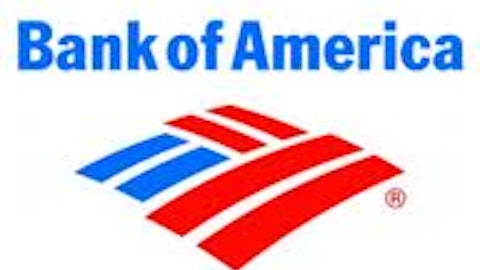The financial crisis ended — at least where the markets are concerned — four years ago. But some people couldn’t believe it was over. On the way back up, they warned that it was a garbage rally, a sucker’s game that would soon take adventurous investors to the poorhouse. Pundits and analysts pointed to dire financials and warned that soaring speculative selections might soon go the way of the dodo.
Plenty of stocks did go belly-up. But an elite few not only survived, but they thrived — producing outsized gains that have made the Dow Jones Industrial Average (Dow Jones Indices:.DJI)‘s four-year double look like pocket change. Make no mistake: These were some incredibly risky stocks to chase in the dark days of 2009, as you’ll soon see from a few eye-popping then-and-now financial comparisons. Did you listen to the doomsayers and sit on the sidelines, or did you jump in with both feet, not knowing when (if ever) you might touch bottom?

The Dow bottomed out on March 9, 2009, after peaking in October 2007, and it’s since recovered to set fresh all-time record highs. In the four years since that day, the index has gained 120%, which increases to 146% if its components’ dividends are added to the calculation. That’s not bad, but it can’t hold a candle to these “garbage stocks” that turned out to be diamonds in the rough. Each has returned a minimum of 500% since the end of the financial-crisis crash, and some have recorded gains well in excess of 1,000%:
| Stock | Total Loss From Peak to Trough (2007-2009) | Market Cap at End of Crash | Total Return Since End of Crash |
|---|---|---|---|
| Newcastle Investment Corp (NYSE:NCT) | 98% | $16.36 million | 4,350% |
| American Express Company (NYSE:AXP) | 83% | $12.34 billion | 555% |
| General Growth Properties Inc (NYSE:GGP) | 99% | $98.81 million | 5,630% |
| Ford Motor Company (NYSE:F) | 79% | $4.20 billion | 666% |
Source: YCharts.
What a wild ride. Let’s see how these companies have performed on a variety of metrics, both before and after the crash, to get a better understanding for why their stocks were so hated then — and why they’ve since proved the doubters wrong.
What happened to Newcastle?
Trailing-12-month earnings per share in 2009: ($56.81)
Most recent TTM earnings per share: $2.94
Debt-to-cash ratio in 2009: 105.3
Most recent debt-to-cash ratio: 8.0
Total return from start of crash to today: (14%)
On June 11, 2009, a Seeking Alpha blogger said:
“Non-recurring expenses during the last two quarters … reflect the mark-to-market valuation of securities, many of them the toxic subprime mortgage securities so well documented in the media, turning out to be quite toxic indeed. [This] has turned a healthy, albeit highly leveraged, balance sheet, into one … poised to feel the cost of the recession in the form of delinquencies at levels which continue to rise precipitously, year over year.”
When this article was published, Newcastle had already gained 145% from the Dow’s low point.
Mortgage REIT Newcastle took an incredible loss — 65 times its total market cap — as a result of a business model reliant on commercial real estate debt and mortgage servicing. However, the slow real estate recovery has also helped Newcastle climb out of a deep hole, and a number of crafty financial deals also boosted the company’s bottom line since 2009. Newcastle’s trailing-12-month net income of $429 million is almost 250% higher than its result just before the crash started, which is impressive considering the purported profitability of pre-crisis mortgage businesses.
What happened to American Express Company (NYSE:AXP)?
Trailing-12-month earnings per share in 2009: $2.32
Most recent TTM earnings per share: $3.89
Debt-to-cash ratio in 2009: 3.2
Most recent debt-to-cash ratio: 2.7
Total return from start of crash to today: 14%
On July 23, 2009, James Cullen of CollegeAnalysts said:
After falling below $10 per share in March, American Express Company (NYSE:AXP) stock has almost tripled as part of the broad rally in the stock market. This has led many to question if the stock has become overvalued, especially as economic data continues to indicate weak consumer spending. … Rising unemployment has led to greater defaults on credit cards; after suffering losses on fewer than 2% of loans in parts of 2006, American Express Company (NYSE:AXP)’ current loss rate is in excess of 10%.
At this point, American Express Company (NYSE:AXP) had already gained 183% from the Dow’s low point.
American Express Company (NYSE:AXP) has been the Dow’s best performer since the end of the crash. It’s also among the strongest of major American financial institutions, according to the latest Federal Reserve stress tests. Even under assumptions that the economy would fare worse than it did during the financial crisis, American Express Company (NYSE:AXP) managed to resist the hypothetical monster losses faced by most large banks. Its most recent earnings offered plenty of reasons to relax and hold on for the ride — revenue was up, return on equity was strong, and there’s lots of excess cash to cushion against any decline.
What happened to General Growth Properties Inc (NYSE:GGP)?
Trailing-12-month earnings per share in 2009: $0.02
Most recent TTM earnings per share: ($0.52)
Debt-to-cash ratio in 2009: declared bankruptcy in 2009
Most recent debt-to-cash ratio: 25.6
Total return from start of crash to today: (60%)
On July 10, 2009, Dan Amos of the Strategic Short Report said:
In a scenario of paying off staggering debt loads under stress, the claims of common shareholders are either diluted or wiped out completely. This is the scenario facing General Growth Properties Inc (NYSE:GGP), and shareholders will be lucky to recover anything. You can find shades of the General Growth saga throughout the REIT space. … While there are certainly opportunities to be had in this market, as I see it, REITs aren’t one of them.
General Growth Properties Inc (NYSE:GGP) had already gained 268% by this point after initiating bankruptcy proceedings.
Mall operator General Growth Properties Inc (NYSE:GGP) foundered in the financial crisis as strapped American consumers stayed home, but it’s begun to find its way again after exiting bankruptcy. Despite the earnings loss reported, General Growth’s EBITDA, mall portfolio net operating income, funds from operations, and adjusted net income all displayed positive momentum in its most recent quarter. Consumers are back, and malls are looking crowded again. General Growth’s pared down billions in debt and has refinanced billions more at more favorable interest rates, and its projections for 2013 also offer hope for slow but steady growth.
What happened to Ford Motor Company (NYSE:F)?
Trailing-12-month earnings per share in 2009: ($6.50)
Most recent TTM earnings per share: $1.42
Debt-to-cash ratio in 2009: 70.0
Most recent debt-to-cash ratio: 4.6
Total return from start of crash to today: 60%
On Aug. 10, 2009, investment research executive Martin Weiss told Bloomberg Businessweek:
Anyone recommending Ford Motor Company (NYSE:F) today is probably basing it on the shaky premise that (1) the recent pick-up in auto demand is sustainable, (2) the U.S. auto industry somehow has restored — or will restore — its competitive power, (3) Ford Motor Company (NYSE:F) shares still provide good value despite their sharp rally — from $1.26 per share last November to $8.44 last week. … [T]he auto industry recovery is driven more by unsustainable government bailouts than lasting growth in demand, and Ford Motor Company (NYSE:F) will have long-term difficulty competing.
Ford Motor Company (NYSE:F) had risen 344% from the Dow’s low point by the time this warning was published.
Ford Motor Company (NYSE:F)’s done a great job paring down its massive debt load since the end of the crash. In the past four years, long-term debt has fallen by nearly 30%. It’s also done a great job at changing its image from outmoded American clunker to stylish but affordable innovator. Analysts like the one I quoted saw a forest of sickly automakers but didn’t think to take a much closer look at the individual trees. Ford’s sales declined in 2009, as did everyone else’s — but from then on, Ford’s increased its sales numbers by nearly 40%. That’s no small feat in a world still struggling mightily to recover from financial catastrophe.
The article 4 Treasures From the Great “Dash for Trash” Rebound of 2009 originally appeared on Fool.com and is written by Alex Planes.
Fool contributor Alex Planes holds no financial position in any company mentioned here. Add him on Google+ or follow him on Twitter, @TMFBiggles, for more insight into markets, history, and technology.The Motley Fool recommends American Express and Ford and owns shares of Ford.
Copyright © 1995 – 2013 The Motley Fool, LLC. All rights reserved. The Motley Fool has a disclosure policy.





